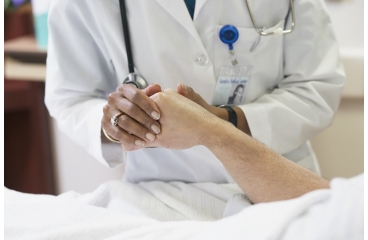
Overview
You have just had some blood removed. This procedure is called phlebotomy (say "fleh-BAW-tuh-mee").
People have their blood taken (drawn) for several reasons. You may have just donated blood so that it can be used to help someone else. Or you may have had blood removed to treat a medical condition, such as hemochromatosis or polycythemia. These take more blood than the sample that is needed for simple lab tests. For donation, about a pint of blood is drawn. If it's drawn for treatment, then more or less than a pint may be taken.
The puncture wound caused by the poke from the needle for giving blood usually heals without trouble. Most people feel fine after they give blood. But there are some simple things you can do to take care of yourself before you go home.
- Right after you give blood, you may be asked to sit for a while and have some water or juice and a snack.
- When you leave, get up slowly to make sure that you're not lightheaded. You may want to have a family member or friend take you home.
Follow-up care is a key part of your treatment and safety. Be sure to make and go to all appointments, and call your doctor if you are having problems. It's also a good idea to know your test results and keep a list of the medicines you take.
How can you care for yourself at home?
- In the hours after you give blood, make sure to:
- Drink plenty of fluids to help replace the lost fluid. If you have kidney, heart, or liver disease and have to limit fluids, talk with your doctor before you increase the amount of fluids you drink.
- Limit your physical activity for several hours.
- If you feel a little lightheaded, lie down for a while, and have some snacks. Call the blood bank or clinic if you feel sick within 24 hours after you give blood.
- Eat foods rich in iron, such as meat, fish, beans, or leafy green vegetables, for several weeks to help your body make new red blood cells.
When should you call for help?
Call your doctor now or seek immediate medical care if:
- You are dizzy or lightheaded or feel like you may faint.
- You have signs of infection, such as:
- Increased pain, swelling, warmth, or redness.
- Red streaks leading from the area.
- Pus draining from the area.
- A fever.
Watch closely for changes in your health, and be sure to contact your doctor if you have any problems.
Where can you learn more?
Go to http://www.healthwise.net/patientEd
Enter O538 in the search box to learn more about "Blood Draw for Donation or Treatment: Care Instructions".
Current as of: December 13, 2023
Author: Ignite Healthwise, LLC Staff
Clinical Review Board
All Healthwise education is reviewed by a team that includes physicians, nurses, advanced practitioners, registered dieticians, and other healthcare professionals.

